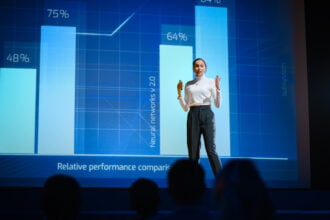As our followers know, for the past few years Juice has been creating software applications that solve customers’ real information visualization problems in purposeful, understandable, and beautiful ways. In doing this, we have found ourselves reusing quite a few components over and over again – which has made our jobs a lot easier. It occurred to us that others might like to benefit from using these components to achieve great results too.
We’re proud to announce the open source release of Juice Analytic’s JuiceKit SDK.
The JuiceKit is a toolkit built on Adobe’s Flex SDK to make it easier for web designers and software developers to build visually compelling Information Experiences™. It contains a wide variety of development components from individual data renderers such as a single “small multiple”, to a large visualization component such as a treemap or US Map, to fine grained “helpers” that provide handy capabilities such as copying data to the computer’s clipboard. These components can be used independently, within other applications, or assembled together to create full applications.
What can I do with it? (Show me the money)
Because we’ve been using the JuiceKit for quit…
As our followers know, for the past few years Juice has been creating software applications that solve customers’ real information visualization problems in purposeful, understandable, and beautiful ways. In doing this, we have found ourselves reusing quite a few components over and over again – which has made our jobs a lot easier. It occurred to us that others might like to benefit from using these components to achieve great results too.
We’re proud to announce the open source release of Juice Analytic’s JuiceKit SDK.
The JuiceKit is a toolkit built on Adobe’s Flex SDK to make it easier for web designers and software developers to build visually compelling Information Experiences™. It contains a wide variety of development components from individual data renderers such as a single “small multiple”, to a large visualization component such as a treemap or US Map, to fine grained “helpers” that provide handy capabilities such as copying data to the computer’s clipboard. These components can be used independently, within other applications, or assembled together to create full applications.
What can I do with it? (Show me the money)
Because we’ve been using the JuiceKit for quite a while, we have a number of customer proven applications based on the SDK that we thought you’d be interested in seeing.
Here is a screenshot of an application that we built to help our client see trends in their internet search and traffic activity. We used the JuiceKit™ to create the small multiples data visualization component of this application.

We’ve also frequently used JuiceKit to create dashboard prototypes. If you haven’t seen our recent application of our treemap component to the incomprehensible Federal Stimulus Plan, here is a nice example (click to explore):
And here is a very quick one we did for an IVR monitoring application where we assembled multiple different components together into one view:

Finally, we’ve used JuiceKit many times to build full enterprise applications such as this sales pipeline tracking dashboard:

How do I get it?
Now it’s time for you to have a go. Here’s how you do it:
- Go to the JuiceKit SDK web page at juicekit.org and catch up on the current status of the project
- Check out the JuiceKit discussion group on Google Groups
- Download the JuiceKit library from github
- Contribute back to the JuiceKit community to make the JuiceKit even better
While Juice continues to focus on designing and providing software solutions (as opposed to toolkits) for our clients, we believe offering the JuiceKit as open source will benefit the information visualization community we try to serve. In the future we will continue to extend the JuiceKit with other components and technologies.
Good luck, and make sure you share how you’re using the SDK so we can continue to drive it in the right direction not only for us, but for you as well.








